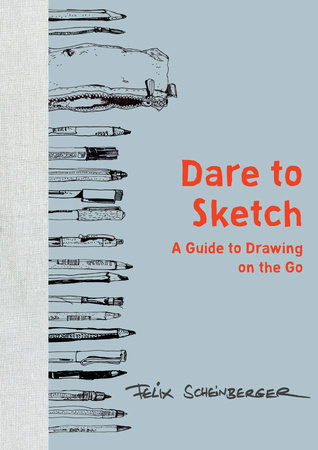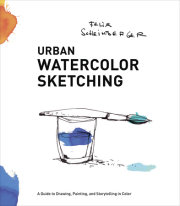Foreword
7 Why use a sketchbook?
The sketchbook
8 Which sketchbook?
11 Choosing a format
A book with personality
12 Where to begin?
14 Protecting your sketchbook
17 Notes are permitted
18 Journaling
21 Doodling will set you free
22 The right and wrong ways to draw
Tools
24 Specialty pens
27 Sepia ink
29 Colored pencils
31 Ballpoint pens
32 And, of course, pencils
36 Markers, glitter pens, and beyond
39 Watercolors
44 Collage
Expressing yourself
47 Visualizing your ideas
48 Blind contour drawing
51 Your line is you
52 Mistakes are allowed!
55 Drawing what you feel
56 Drawing is not photography
58 Letting imagination complete the picture
61 Drawing the invisible
The basics
62 Shot settings and westerns
64 Five types of shot settings
68 Getting a feel for composition
70 Weight and balance
72 Collected works
74 Perspective
78 Depth and perspective
80 Landscapes
83 Nature
84 Landscapes and time
87 Coloring landscapes
88 Landscapes in ink
90 Light and shadow
93 Depicting shadows
People
95 People are not objects
96 Friends
98 Passersby
101 Performers
103 Hide and seek
104 Use your head
106 Portraits and caricature
108 Nudes and proportion
Animals
110 “It won’t stop moving!”
Architecture
114 New and old places
117 Consider the everyday
118 Drawing buildings
The right place
120 Stay open
123 Good and bad places
124 Finding your spot
127 Don’t forget to draw the cars
128 Cars mark the era
130 Montages
132 Objects
Traveling
134 When in Rome, see what the Romans see
137 Travel drawings
138 The journeying artist is not a tourist
141 Drawing is a global language
142 The right place at the right time
144 Museums
147 Panoramas
149 Trifles and truffles
Taking it further
151 Reality is not reality is not reality
152 Everything is in flux
154 Redoing drawings
156 Using digital media
157 Whatever happened to da Vinci’s sketchbook?





